- عنوان کتاب: Pattern Recognition Primer
- نویسنده: Karol Przystalski, Maciej J. Ogorzałek
- حوزه: یادگیری ماشین, تشخیص الگو
- سال انتشار: 2025
- تعداد صفحه: 281
- زبان اصلی: انگلیسی
- نوع فایل: pdf
- حجم فایل: 9.76 مگابایت
این کتاب برای طیف وسیعی از دانشمندان داده، مهندسان یادگیری ماشین، تحلیلگران داده، معلمان دانشگاهی و به ویژه برای دانشجویان مناسب است. یکی از مزایای این کتاب این است که خواننده میتواند توضیح مفصلی از هر روش طبقهبندی رایج دریافت کند. هر روش با استفاده از مثالهای مقایسهای ساده و همچنین مثالهای آماده استفاده نوشته شده به زبان پایتون، به روشی آسان برای درک ارائه شده است. معلمان میتوانند از آن برای سخنرانیها/درسهای خود و دانشآموزان برای یادگیری روشهای طبقهبندی استفاده کنند. هر تمرین دارای یک راهحل است که در پیوست کتاب توضیح داده شده است. علاوه بر این، مثالهای آماده استفاده نوشته شده به زبان پایتون نیز نشان داده شده است. معلمان میتوانند از آن برای سخنرانیها/درسهای خود و دانشآموزان برای یادگیری روشهای طبقهبندی استفاده کنند.
توسعه کامل و تغییرات فراوان در این کتاب تقریباً ده سال طول کشید. این امر تا حد زیادی به دلیل تغییرات سریع مشاهده شده در این حوزه، توسعه بسیار سریع حوزه شبکههای عصبی عمیق و هوش مصنوعی و کاربردهای پررونق آنها بوده است. متأسفانه در طول تهیه نسخه خطی، همکار بسیار ارزشمند خود، دکتر ویسلاو چمیل-نیسکی را از دست دادیم. ما دلتنگ نظرات متفکرانه او هستیم و مایلیم از مشارکتهای مهم او، به ویژه در فصلهای SVM، قدردانی کنیم. همچنین از همکاران و دوستان بیشماری که از ما حمایت کردند، قدردانی میکنیم.
همچنین از دانشجویانی که دورههای پردازش سیگنال، بیومتریک، یادگیری ماشین و شبکههای عصبی و کاربردها را دنبال کردند، تشکر میکنیم.
تشخیص الگو در چند سال گذشته به یک واژه بسیار محبوب تبدیل شده است و در بسیاری از راهحلهای تجاری به طور گسترده مورد استفاده قرار میگیرد. در سال 2023، میتوانیم روندهای زیادی را پیدا کنیم. روندهایی مانند مدلهای زبان بزرگ، الگوریتمها، یادگیری عمیق و غیره وجود دارد. اکثر این روندها کم و بیش با موضوع این کتاب مرتبط هستند. نکته مهم در اینجا این است که برای چندین سال در هر یک از این فهرستهای روند، میتوانیم اشارات زیادی به هوش مصنوعی و تشخیص الگو پیدا کنیم. ما گسترش جامعتری از استفاده از تشخیص الگو را در سالهای آینده پیشبینی میکنیم.
قبل از اینکه در این فصل عمیقتر به برخی از جنبههای ریاضی تشخیص الگو بپردازیم، توضیح میدهیم که تشخیص الگو و اصطلاحات مرتبط با آن چیست. یک الگو را میتوان به روشهای مختلفی توصیف کرد. در این کتاب، آن را «مخالف آشوب» توصیف کردهاند؛ موجودیتی است که به طور مبهم تعریف شده و میتوان برای آن نامی تعیین کرد. دو نوع شناختهشدهی تشخیص الگو، تشخیص تصویر و تشخیص گفتار هستند. ما روزانه از آنها استفاده میکنیم و گاهی اوقات حتی از وجود آنها بیاطلاع هستیم. تشخیص چهره در دوربین نمونهای از تشخیص تصویر است. سیری، که بخشی از هر دستگاه آیفون است، شامل الگوریتمهای تشخیص گفتار است. اینها تنها دو نمونه از مجموعهی بزرگی از نمونههای کاربرد تشخیص الگو هستند. فهرستی مفصلتر اما نه کامل از موارد کاربرد تشخیص الگوها را میتوانید در … بیابید.
This book is suitable for wide range of data scientists, machine learning engineers, data analysts, academic teachers and especially for students. One of the advantages of this book is that the reader is able to get a detailed explanation of each commonly used classification method. Each method is presented in a easily to understand way by using simple comparison examples and additionally ready to use examples written in Python. Teachers can use it for their lectures/lessons and students to learn about clas-sification methods. Each exercise have a solution that is described in the appendix to the book. Additionally, ready to use examples written in Python are shown. Teachers can use it for their lectures/lessons and students to learn about classification methods.
Full development and many changes to this book took almost ten years to complete. This has been caused in large part by rapid changes observed in the domain, extremely fast development of the area of deep neural networks and AI and their booming applications. Unfortunately during the course of preparation of the manuscript we lost our extremely precious collaborator Dr. Wiesław Chemiel-nicki. We miss his thoughtful comments and we wish to express our gratitude for his important contributions especially to the SVM chapters. We express also our gratitude to numerous colleagues and friends who gave us support.
We thank also our students who followed courses in Signal processing, Biometrics, Machine learning and Neural networks and applications.
Pattern recognition has become a very popular buzzword over the last few years and is widely used in many commercial solutions. In, we can find many trends for 2023. There are such trends as large language models, algorithms, deep learning, and so on. Most of these trends are more or less related to the topic of this book. What is important here is that for several years in each of these trend lists we can find many references to artificial intelligence and pattern recognition. We predict an even more comprehensive expansion of pattern recognition usage in the upcoming years.
Before we go deeper into some mathematical aspects of pattern recognition in this chapter, we explain what pattern recognition and related terms are. A pattern can be described in many ways. In it is described as “opposite of chaos; it is an entity, vaguely defined, that could be given a name”. The two best-known pattern recognition types are image recognition and speech recognition. We use them on a daily basis and sometimes don’t even know about them. Face detection in a camera is an example of image recognition. Siri, which is part of each iPhone device, con-tains speech-recognition algorithms. These are only two examples of a large set of pattern recognition usage examples. A more detailed but not complete list of patterns recognition usage cases can be found in.
این کتاب را میتوانید از لینک زیر بصورت رایگان دانلود کنید:
Download: Pattern Recognition Primer






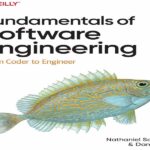


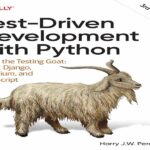

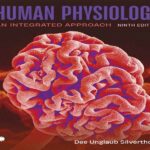
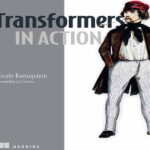




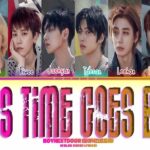


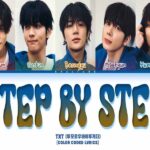













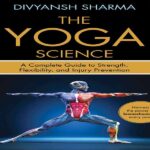

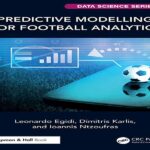
نظرات کاربران